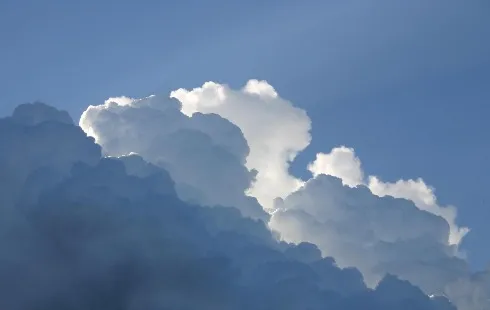
Pantone's Color of the Year an Endless Neutral Loop
Section: Fashion
Researchers have concluded that simply reducing direct emissions from factories, vehicles, and homes is insufficient to combat air pollution effectively.
Human-made carbon-containing particles in the atmosphere pose a significant health risk. These so-called anthropogenic organic aerosols, classified as fine particulate matter, can form not only near emission sources but also at considerable distances away. This finding comes from a research team with Austrian involvement as part of the CLOUD experiment conducted at the European Organization for Nuclear Research (CERN) in Geneva, and is detailed in the journal Nature Geoscience.
Since 2009, the CLOUD (Cosmics Leaving Outdoor Droplets) project at CERN has studied the fundamental processes of cloud formation and air pollution in a controlled laboratory environment. Previous studies conducted by scientists revealed that naturally emitted hydrocarbons play a crucial role in cloud formation. For instance, trees and plants release substances like terpenes and isoprenes, which can lead to the creation of tiny particles that allow water vapor to condense.
However, hydrocarbons are also produced through incomplete combustion processes in transportation, industry, and residential heating, leading to the formation of harmful, lung-penetrating particulate matter. This fine dust contributes to millions of deaths globally each year. Until now, it was commonly believed that the conversion of these hydrocarbons into solid particles occurred through a single oxidation step, where hydrocarbons quickly bind with oxygen to form solid matter.
The team, led by researchers from the Swiss Paul Scherrer Institute (PSI), along with colleagues from the Universities of Innsbruck and Vienna and the Vienna University of Technology, conducted precise measurements of atmospheric chemistry in a 26-cubic-meter stainless steel tank as part of the CLOUD experiment. They filled the tank with a gas mixture resembling urban smog to track the transformation of exhaust gases into organic aerosols.
The researchers demonstrated that precursor gases such as toluene and benzene, originating from vehicle emissions and the combustion of organic materials, undergo multiple oxidation stages before forming solid particles. This process can take anywhere from six hours to two days. The research team estimates that this multi-step oxidation accounts for over 70% of all anthropogenic organic aerosol pollution.
Project leader Imad El Haddad from PSI pointed out that these findings challenge the previous assumption that pollutants primarily form in close proximity to emission sources. The implications suggest that the pollution generated by anthropogenic fine particulate matter has a broader regional impact than previously understood. Consequently, the researchers argue that it is not enough to reduce direct emissions from sources like factories, homes, and vehicles using filters; rather, it is essential to also regulate and mitigate the precursor gases that lead to the formation of harmful organic aerosols.

Section: Fashion

Section: News

Section: Fashion

Section: Arts

Section: Politics

Section: Health Insurance

Section: News

Section: News

Section: News

Section: Arts
Both private Health Insurance in Germany and public insurance, is often complicated to navigate, not to mention expensive. As an expat, you are required to navigate this landscape within weeks of arriving, so check our FAQ on PKV. For our guide on resources and access to agents who can give you a competitive quote, try our PKV Cost comparison tool.
Germany is famous for its medical expertise and extensive number of hospitals and clinics. See this comprehensive directory of hospitals and clinics across the country, complete with links to their websites, addresses, contact info, and specializations/services.
Join us for an enchanting Christmas adventure at the Münchner Marionettentheater! Experience the marionette play 'Der verschwundene Wunschzettel' by Siegfried Böhmke, featuring our beloved Kasperl Larifari and his little friend Stupsi. As Christmas approaches, both Kasperl and Stupsi have prepared...



No comments yet. Be the first to comment!